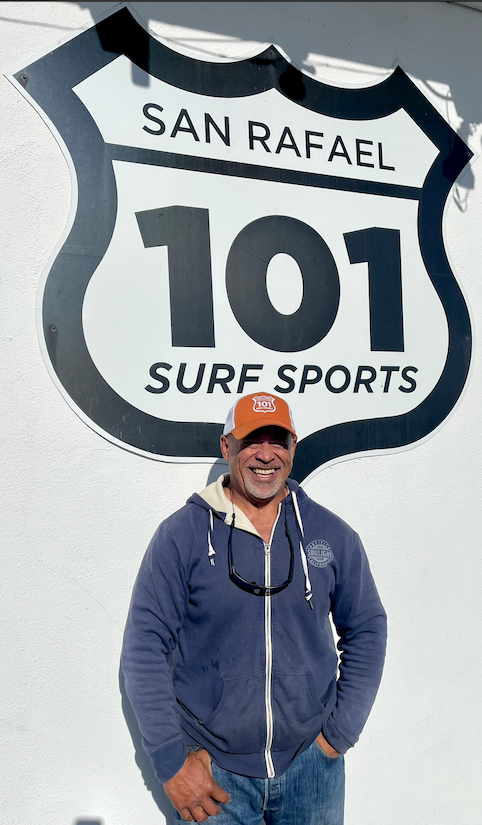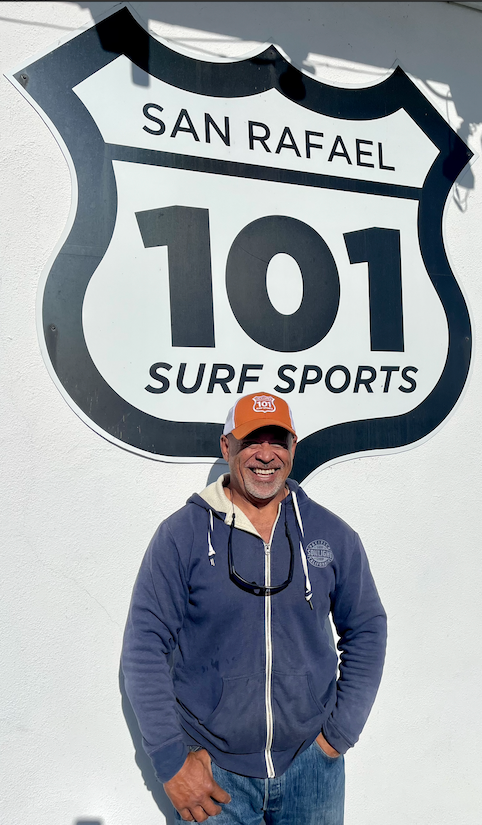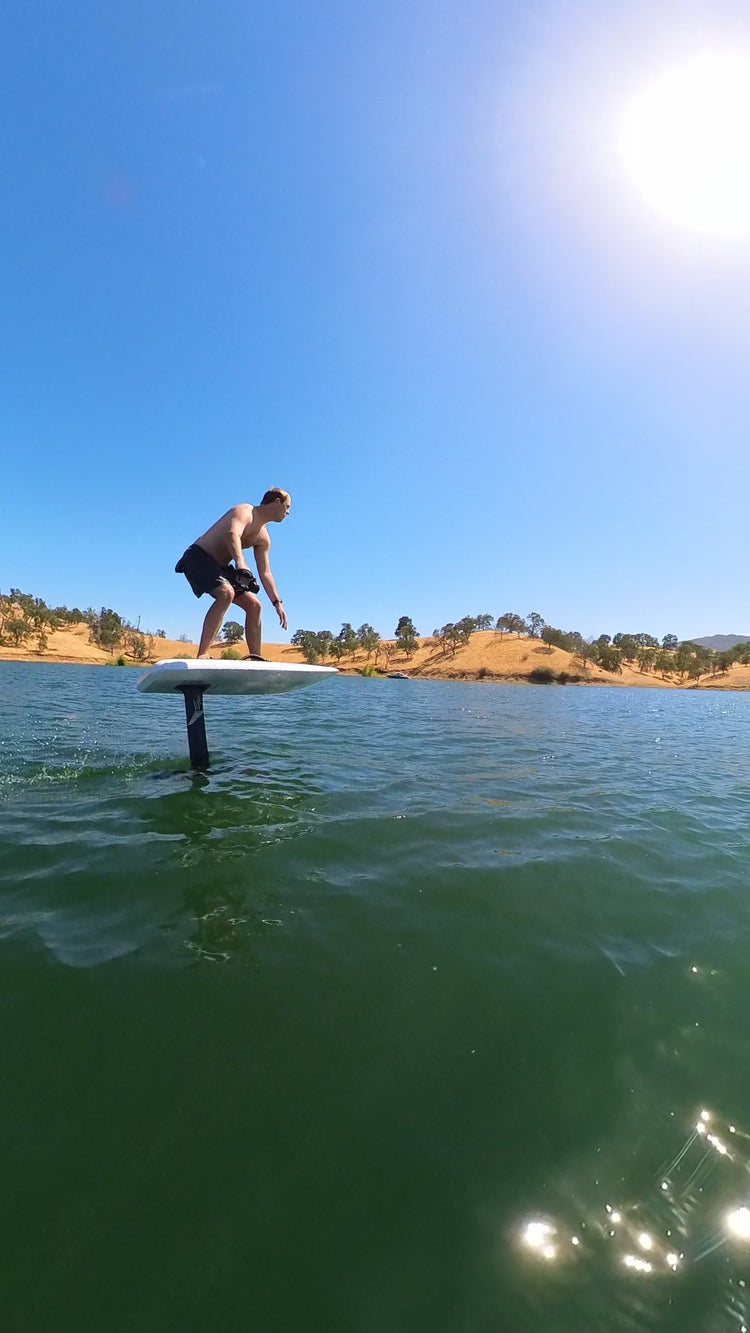

Les Scanlan first started paddling in SoCal in 1977 with a cousin, Ben Tai Tai & Vernon Howe who introduced me to the Polynesian sport of outrigger paddling. He paddled briefly through the 80s but in 1992 he really caught the paddling "bug" and has been paddling non-stop since. A waterman by nature, Les has grown up in and around the ocean all of his life. With an extensive background in 6-man canoe the last few years have seen Les focusing on the OC1 and sharing that with others.
(Interview conducted by Mimi Towle of Marin Magazine)
How did you get started paddling outrigger canoe?
It was during the summer of 1977 in Southern California. I paddled with a canoe club out of the Channel Islands harbor.
Of all the sports out there-why did you choose Outrigger paddling?
I have played a lot of different sports over the years. I have forever been a waterman (fish, sail, boat, surf, stand-up paddler, prone paddle, swim, etc), and outrigger has always been the most consistent of all the sports. I think Outrigger chose me.
As you are teaching beginners, what are the most common mistakes people make as they are learning?I think the most common mistake is having the right arm working in coordination with the left arm and vice versa.
As you work with advanced paddlers, what are the most common mistakes people make?
The most common mistake I see is top hand placement and top hand pressure. Also, not relaxing at the end point of the release phase.
For people interested in learning about Outrigger
What are the best and "most challenging" things about being in a canoe with six people?
I think the best challenge is working together with six people to become "one with the canoe." There is a saying in paddling: Six bodies, One mind, One heart, One canoe.
Is it a sport for extreme athletes?
I know a few extreme athletes that love the sport.
How long are you out on the water? Are there rest stops?
In the team/club aspect, the time on the water and the rest periods can vary with the coaches.
What do you wear? And do you get wet?
I paddle year round. So my clothing choices change with the seasons. Neoprene during the winter, shorts and a rash guard during the summer. I always get wet, but hardly ever soaking wet......unless it is raining!
For the experienced paddlers.
Who are your Youtube Paddle heros (which videos do you watch for inspiration)?
I watch anything that Johnny Puakea puts out there on social media. He has the foremost knowledge with the paddle stroke and the design and function of the outrigger canoe. Two years ago, I had the opportunity to sit and talk story with him about stroke mechanics.
What are your favorite races to travel to and why?
My favorite 6 man outrigger race to travel to is the Santa Barbara Rig Run. I like it because I visit friends and family, and I get to surf in warm water! As far as the one man races; I like the Hanohano race in San Diego. I pamper myself and stay at the Bahia resort.
There are so many stroke styles out there, is there one you like the best?
The best stroke style I like is the one that I constantly work on to perfection. There are so many variations to the stroke. Just find the one that works best for you, or the one that works best for your team. Once you establish this; the next thing is to go out and perfect it! I'm a believer and practitioner of the stroke that Johnny Puakea is teaching. I'm a practitioner working on perfection!
What are the advantages to the slow stroke?
As Johnny Puakea says: "More time in the water." Slow is fast!
When is it appropriate to have a fast rate?
During a race, the stroke rate can change constantly throughout the course of the race depending on many factors. A few of these factors are: surfing, passing a canoe, approaching a turn marker, etc.
How crucial do you think training in an OC1 is to improving your stroke for an OC6?
If you want to be competitive as an individual or a team, training in an OC1 is crucial for the team and the individual. If you want to be mediocre as an individual or a team, then training in an OC1 is not necessary. In other words, if I can improve my stroke on an OC1 and make the OC1 go faster, it's going to help the OC6 go faster.
Is there a definitive resource for the names of the different types of stroke?
Definitive resource.........there are a few books written about paddling over the years. The late Tommy Holmes wrote "The Hawaiian Canoe." I have read or seen any published resource about the different names of strokes. People usually refer to the name of a stroke based on its origin. Examples of names are, the Tahitian stroke, the NAC stroke, or the oldest of the names: the Hawaiian stroke.
He offers lessons that are $150 and they last for around 90 minutes to 2 hours.
You can bring your own outrigger canoe or use one of ours! Same price, no discount with your own boat.
It is perfect for beginner, intermediate or advanced paddlers!
We sugguest that you wear fast-drying, synthetic clothing or neoprene (based on the weather).
He also records the lesson, enabling you to review the recording, which allows you to observe your techniques, identify strengths, and pinpoint areas for improvement!
We book these lessons based on mutual availability. Please call ahead or email us to book a session soon!

